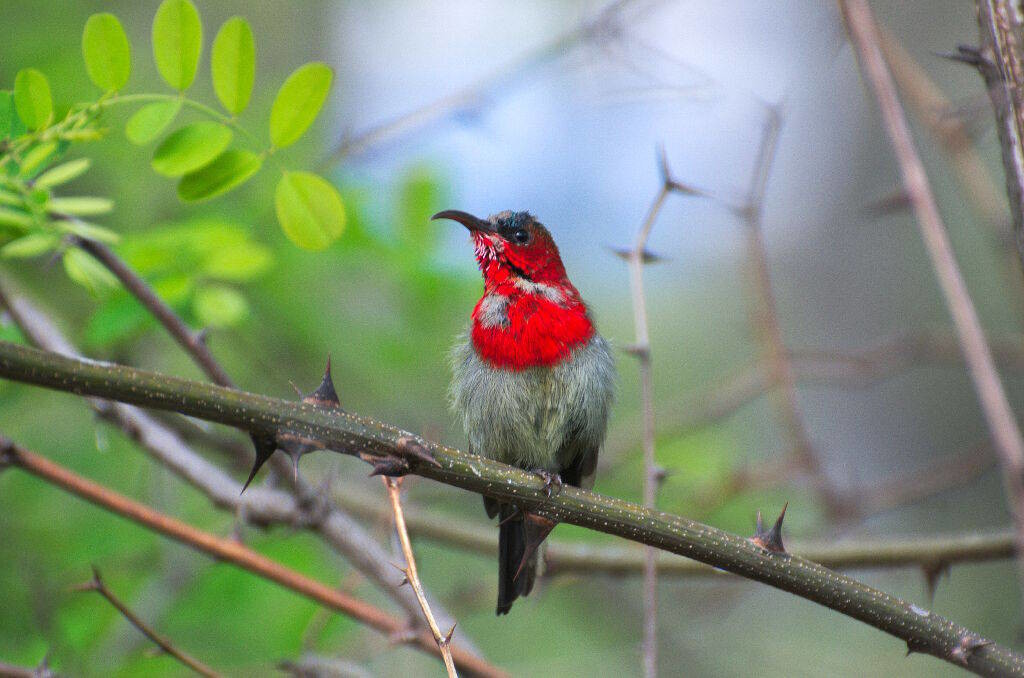
Aethopyga siparaja (Crimson sunbird)
Aethopyga siparaja, commonly known as the Crimson Sunbird, is one of the most vibrant bird species recorded in the Great Himalayan National Park (GHNP). Characterized by its brilliant crimson plumage, metallic green crown, and slender, down-curved bill, Aethopyga siparaja brings flashes of color to the dense forests and flowering trees within GHNP. Its agile flight and preference for nectar-rich environments make it a key pollinator in the park’s lower and middle elevation zones.
Visitors trekking through GHNP’s subtropical forests often catch glimpses of Aethopyga siparaja as it flits energetically among blossoms, contributing both to the beauty and ecological functioning of the park.
Habitat and Distribution in GHNP
Aethopyga siparaja is primarily found in subtropical and lower temperate forests within GHNP, typically between 1,000 and 2,400 meters elevation. It favors habitats rich in flowering plants, including forest edges, shrubby clearings, and near watercourses where vegetation is abundant.
The bird is particularly active during the spring and early summer months, when many native Himalayan plants, such as rhododendrons and cherry trees, are in full bloom. Sightings of Aethopyga siparaja are common along sun-drenched trails where dense forest opens into glades filled with wildflowers.
Feeding Behavior
Aethopyga siparaja feeds mainly on nectar, inserting its curved bill deep into flowers. It also consumes small insects and spiders, especially during the breeding season when protein demand is high. Unlike some other sunbirds, it often hovers like a hummingbird to feed but will also perch while drinking nectar.
Its lively behavior and high-pitched calls make it a delightful presence in the flowering zones of GHNP. Males display a more vivid crimson coloration during the breeding season, while females and young birds show duller olive-green tones.
Conservation Status and Importance
Although Aethopyga siparaja is classified as a species of Least Concern, conservation of its natural habitat remains crucial. The dependence of Aethopyga siparaja on healthy flowering plant communities ties its survival closely to the overall ecosystem health of GHNP.
The protected status of GHNP offers a safe refuge where Aethopyga siparaja continues to thrive, supporting the park’s biodiversity through its role in pollination.
| Common name | Crismson Sunbird |
| Scientific name | Aethopyga siparaja |
| Family | Nectariniini |
| Description | A brilliantly coloured glistening purple, green and crimson sunbird with long, pointed, metallic green tail and a distinctive yellow rump. Female short-tailed as in the Purple species, but duky olive-green above, dull ashy green below. Pairs in well-wooded country. It flits about restlessly like a gem in the sunshine among blossoming shrubs and trees, hanging upside down and in other acrobatic positions to probe into the flower rubes for nectar. Also eats insects and spiders. It is found over the greater part of the Indian Union, in moist-deciduous and evergreen forest biotopes, up to between 1500 and 2500m elevation in the Himalayas. |



